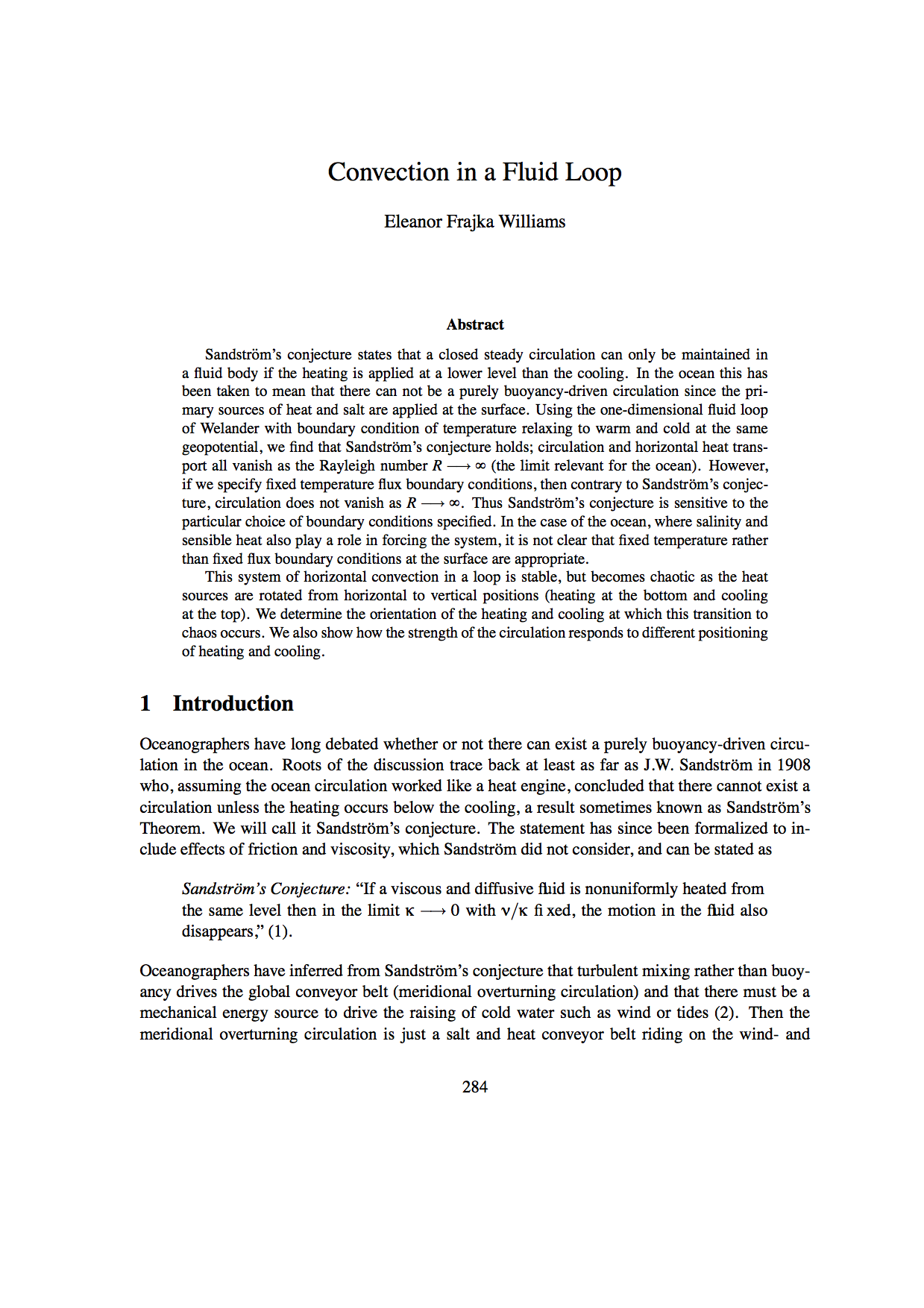Frajka-Williams, Eleanor
abstract: Sandström’s conjecture states that a closed steady circulation can only be maintained in a fluid body if the heat source is situated at a lower level than the cold source. In the ocean this has been taken to mean that there can not be a purely thermohaline circulation since the primary sources of heat and salt are at the surface. Using the one-dimensional fluid loop of Welander with a boundary condition of temperature relaxing to warm and cold at the same geopotential, we find that Sandström’s conjecture holds; circulation and horizontal heat transport all vanish as the Rayleigh number R–>∞. However, if we specify fixed temperature flux boundary conditions, then contrary to Sandström’s conjecture, circulation does not vanish as R–>∞. Thus Sandström’s conjecture is sensitive to the particular choice of boundary conditions specified. In the case of the ocean, where salinity and latent heat also play a role in forcing the system, it is not clear that fixed temperature boundary conditions at the surface are appropriate. The system of horizontal convection in a loop is stable, but becomes chaotic as the heat sources are rotated from horizontal to vertical positions (heating at the bottom and cooling at the top). We determine the orientation of the heating and cooling at which this transition to chaos occurs.
@inproceedings{FrajkaWilliams-2004,
author = {Frajka-Williams, Eleanor},
title = {Convection in a Fluid Loop},
booktitle = {Proceedings of the WHOI Geophysical Fluid Dynamics program},
note = {with {Raffaele} {Ferrari}},
year = {2004},
url = {https://www.whoi.edu/fileserver.do?id=21370&pt=10&p=17273}
}
